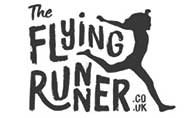Menu
This seems to have become the hottest topic in running recently. There is a huge array of material, mainly web based, amidst which it can be hard to pick out the robust objective content amidst all the eulogising or critical case histories (which are purely one person’s totally individual story and no more); the ‘evangelists’ who have greater enthusiasm than empirical evidence in some cases; and those who have never tried them but say they are happy as they are in ‘normal’ shoes.
So a few brief points:
- In terms or re-educating your feet and movement without injuring them in the ‘acclimatisation’ period, all the advice is that this needs to be a very gradual process starting with just a couple of minutes and then building the distance extremely cautiously. For those running two or three times a week, say 20 miles/30k, the suggested timescale for a full ‘conversion’ is about 3 to 4 months. Also, on the basis that it seems likely that if you do only a small proportion of your total running in minimalist shoes then your ‘normal’ running gait will stay as the one you use in heavier shoes whilst that is the footwear in which you do the bulk of your mileage. So this leaves the runner with the awkward choice that to adapt their gait to the optimum in minimalist shoes they need to block out a window of several months when they accept that they will do very little running whilst they build up the distance in the minimalist shoes if they want to do it thoroughly. Very few runners will be willing to make this concession although they may consider keeping up a full aerobic training load by using the likes of bike; elliptical; Rower etc and particularly if they are willing to do so in a period some months away from any key running goals
- A very recent Australian study by Dr Jason Bonacci showed that there are some significant differences between running barefoot and running in a minimalist shoe; just as there are between running in a minimalist shoe and a more cushioned shoe; so minimalist does not equal barefoot. To simplify in summary the study, it found that the key practical differences in moving from a traditional cushioned trainer were a notable increase in stride frequency and a clear decrease in average stride length; a significant reduction in ‘negative work’ done at the knee joint; a significant increase in the power and flexion generated at the ankle. This shift in stress between the knee and ankle is perhaps the key in why for many runners with a history of knee injury the conversion can lead to an increase in performance and a reduction in injuries to the knee. It also suggests that the frequent trend of calf and Achilles soreness in minimalist ‘newbies’ is because they bring inadequate strength and flexibility in this area to the new footwear. From a ‘coaching eye’ viewpoint, this tallies with how clearly one can see the difference in power and drive from the ankle area between an elite distance runner and a much slower athlete if one observes closely
- Many long distance runners are not optimally conditioned for their training and racing schedules and aspirations. Put simply, they train until their weakest link breaks down, often dragging a load of other weak links with it. Hence injuries. So changing your running gait may well have some changes – benefits, even – in how vulnerable the weak links are when you run, but won’t magically change your strength and conditioning status. The adaptation process will no doubt improve your conditioning – we have all heard physio advice on how many muscle groups aren’t ‘firing’ or ‘being recruited’ as a contributory factor to various injuries. But it isn’t clear that this will be a panacea – which goes back to the starting point about how individual the whole subject is

